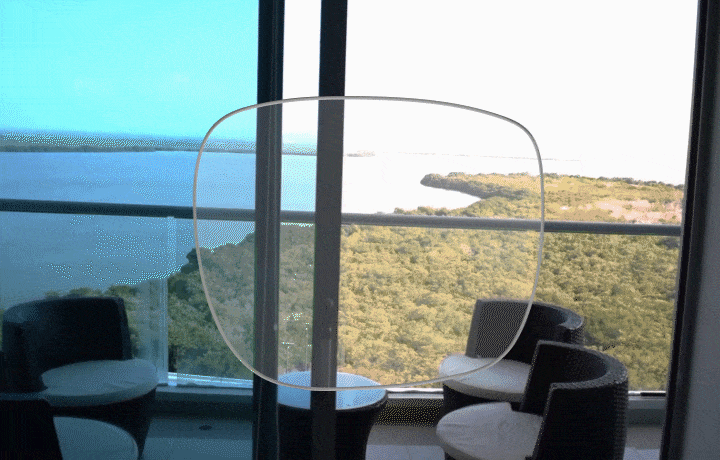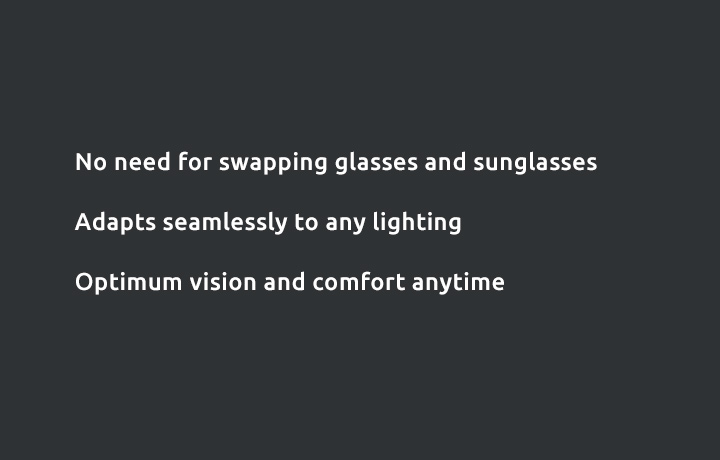FIRMOO DAY SALE: Up to 70% Off Frames + 20% Off Lens Upgrades | Code: FIRMOODAY
6D:01:10:38

Photochromic lenses are clear indoors and darken automatically in sunlight, for convenient, two-in-one glasses and sunglasses.



Photochromic lenses are clear indoors and darken automatically in sunlight, for convenient, two-in-one glasses and sunglasses.



About
Photochromic sunglasses are equipped with photochromic lenses, which darken substantially in response to UV light in less than one minute and then continue to darken very slightly over the next fifteen minutes. The lenses will begin to clear as soon as they are away from UV light, and will be noticeably lighter within two minutes and mostly clear within five minutes. However, it normally takes more than fifteen minutes for the lenses to completely fade to their non-exposed state. The best quality photochromic lenses can offer very quick transition times.
Sunglasses or prescription eyeglasses that darken when exposed to the sun were first developed by Corning in the late 1960s and popularized by Transitions in the 1990s. In fact, because of the extreme popularity of the Transitions brand, these lenses are usually referred to as transition lenses. The correct term for these glasses is photochromic or photochromatic, which refers to a specific chemical reaction the lenses have to ultraviolet (UV) radiation.
Photochromic lenses have millions of molecules of substances such as silver chloride or silver halide embedded in them. The molecules are transparent to visible light in the absence of UV light, which is normal for artificial lighting. But when exposed to UV rays, as in direct sunlight, the molecules undergo a chemical process that causes them to change shape. The new molecular structure absorbs portions of the visible light, causing the lenses to darken. The number of molecules that change shape varies with the intensity of the UV rays. When you go indoors and out of the UV light, a different chemical reaction takes place. The absence of the UV radiation causes the molecules to snap back to their original shape, resulting in the loss of their light absorbing properties. In both directions, the entire process happens very rapidly. An important note about photochromic lenses: because they react to UV light and not to visible light, there are circumstances under which the darkening will not occur. A perfect example of this is in your car. Because the windshield blocks out most UV light, photochromic lenses will not darken. For this reason, most sunglasses with photochromic lenses also have a certain amount of tint already applied to them.
One-on-One Service, Save Up to 90%
60-day Return & Exchange
Unsatisfactory glasses can be exchanged or refunded within 60 days of receipt. 365-Day Warranty
Covering any possible defect in materials and workmanship.Live Chat 24/7
We are always online for you.
Copyright © 0 Firmoo Online Optical Store.All Rights Reserved






